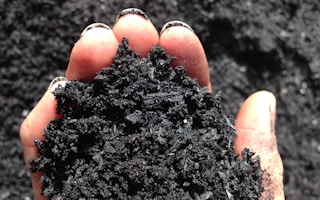The climate change “debate” has deteriorated into something more akin to current political “debate” than a discussion of real policy options for confronting a global challenge with implications for all of us.
The polarised struggle over climate change has left a battlefield strewn with bad options. In this world of Good Guys versus Bad Guys, even discussing win-win solutions seems to be anathema, a concession of defeat. Does that make good business sense? There is no reason that solutions to the climate change challenge must be financial black holes.
We all know the sad story of the Amazonian rainforest. In just 40 years, this once magnificent forest has shrunk by 750,000 square kilometres, an area larger than Texas. The fragile forest soils proved too poor to support anything but extensive pasturing; for years our hamburgers came from cattle that grazed where great trees once stood. Mountains of fertiliser transformed 25 million hectares of one-time forest (an area the size of Michigan) into the world’s second largest soy patch. Today, soy is the most ubiquitous food stuff on earth.
What to do? There is no traction in looking backwards or hoping for miracles. What if we just ask: Given what we have, can good be accomplished if we harness the profit motive for better, not worse?
The answer is “yes”.
Taking the example of the Amazon, there are two issues. First, the destruction of the rainforest pushed climate change by eliminating a major carbon sink (all that carbon tied up in the trees), eliminating a key carbon “filter” (all that photosynthesis removed a lot of CO2), and now the annual burning of soy field waste contributes directly to climate change.
Second, heavy annual applications of fertiliser and pesticides contaminate run-off into local streams, rivers and the Amazon, killing many organisms along the way.
The problem in brief: how to replace the carbon removal capacity of the forest, and stop soy production’s contribution to climate change and downstream pollution.
Impossible? No. Profitable.
“
Without smart business and smart environmentalism, millions of dollars get left on the table, huge damage continues to be done to the climate, and huge environmental restoration projects are being left undone.
For every ton of soy beans produced, farmers harvest 1.05 tons of soy hay – agricultural waste. Most farmers burn it, others plow the waste into their fields, their tractors burning lots of diesel and the waste decomposing over time. Either way, CO2, methane, NOx and other long-term greenhouse gases are released. Neither approach affects agrochemical run-off.
Entirely unnecessary. A low-cost, low-tech process can convert soy field waste into a healthy bottom line conditioner – and do better than solve these environmental problems.
The business of biochar
Soy hay can be converted into “biochar”, a super charcoal made by pyrolysing or charring biomass (soy hay, corn cob, palm fronds) at high heat without oxygen.
The equipment to char widely distributed wastes such as soy hay is inexpensive and simple, ideal where equipment and maintenance are costly but labour is cheap. Biochar production eliminates climate-warming black carbon, virtually all greenhouse emissions, and is carbon negative. That is, biochar production removes CO2 from the atmosphere, and lots of it. Buried in the soil, biochar lasts for thousands of years, sequestering CO2 hundreds of times longer than trees which recycle CO2 to the atmosphere every 100 years.
Where is the value added? It lies in what biochar can do to cut the costs of heavy fertilisation and pesticide application. Fertilisers may be necessary because Amazonian soils are so poor, but heavy fertiliser application also destroys soil fertility by increasing the soil’s acidity and killing soil microbiota that reduce crops’ ability to uptake nutrients. Fertilisers are water-soluble and about 50 per cent ultimately leach away.
But biochar binds fertilisers to its surface where they stay until root hairs find them. With biochar, farmers can apply just 50 per cent of the fertiliser they would otherwise have used. The cost savings are huge and the run-off problem stops.
The biochar solution will not restore the rainforest – nothing will. But imagine if 25 per cent of Amazonian soy hay were converted to biochar annually.
This 17.2 million metric tons of soy hay would produce 4.3 million tons of biochar. This would remove 104,000 tons of smoke from the air annually and 13 million tons of CO2 from the atmosphere – the equivalent of the CO2 produced annually by every car in Denmark. It would reduce total fertiliser demand and fertiliser runoff.
The potential cost savings? One-quarter of total soy acreage is conservatively 6 million ha. At 138 kg/ha, the total fertiliser requirement is 828,000 tons. Sticking with our just 25 per cent savings figure, biochar could reduce this by 207,000 tons producing savings of $71.4 million!
Don’t dismiss the idea just yet.
Cargill, the great agricultural and food products company, produces more than one-quarter of all the soy grown in Brazil. Cargill and The Nature Conservancy already manage a Sustainable Soy programme focused on stopping deforestation for soy production. It is the environmentally responsible thing to do from a conservation perspective. If Cargill adopted a biochar programme, such a programme would be the environmentally responsible thing to do from a future perspective. It would also be hugely profitable.
There is no necessary contradiction between business and environmentalism. Without smart business and smart environmentalism, millions of dollars get left on the table, huge damage continues to be done to the climate, and huge environmental restoration projects are being left undone.
Time to stop the ideological mudslinging and start doing something about smart, win-win solutions.
Michael Shafer is the founder of Warm Heart Worldwide, an NGO based in Northern Thailand and Professor (Emeritus) International Political Economy at Rutgers University.











